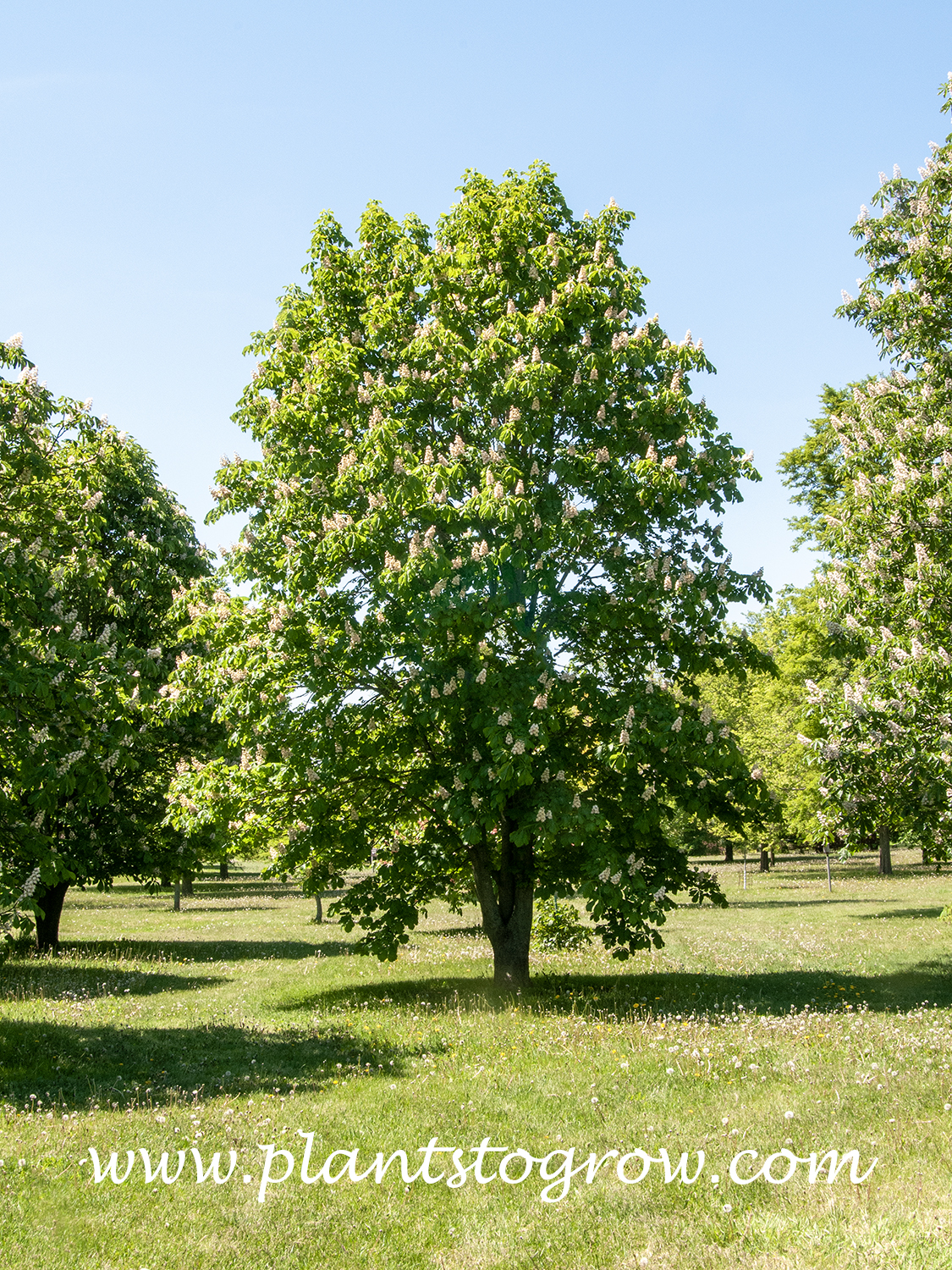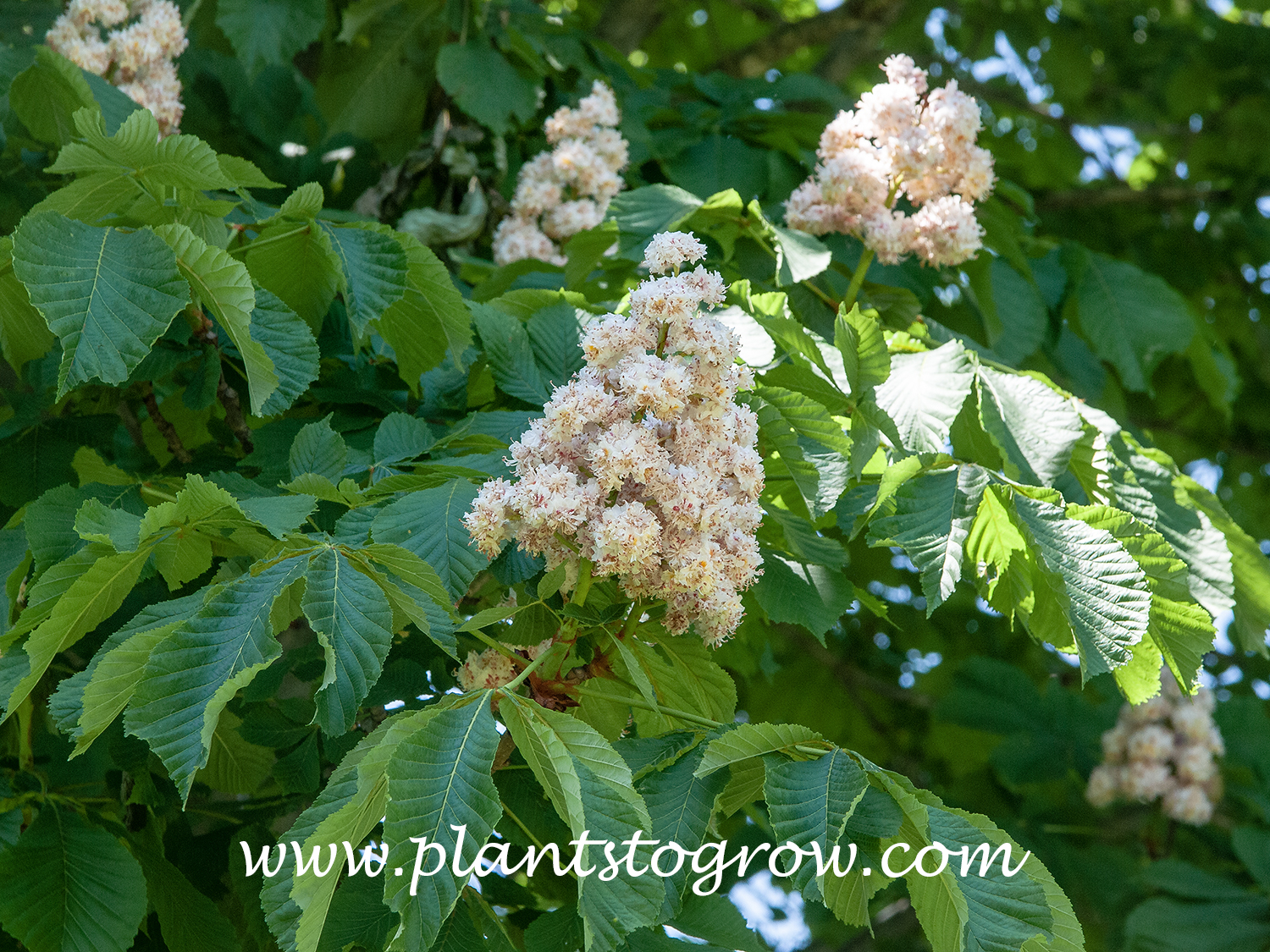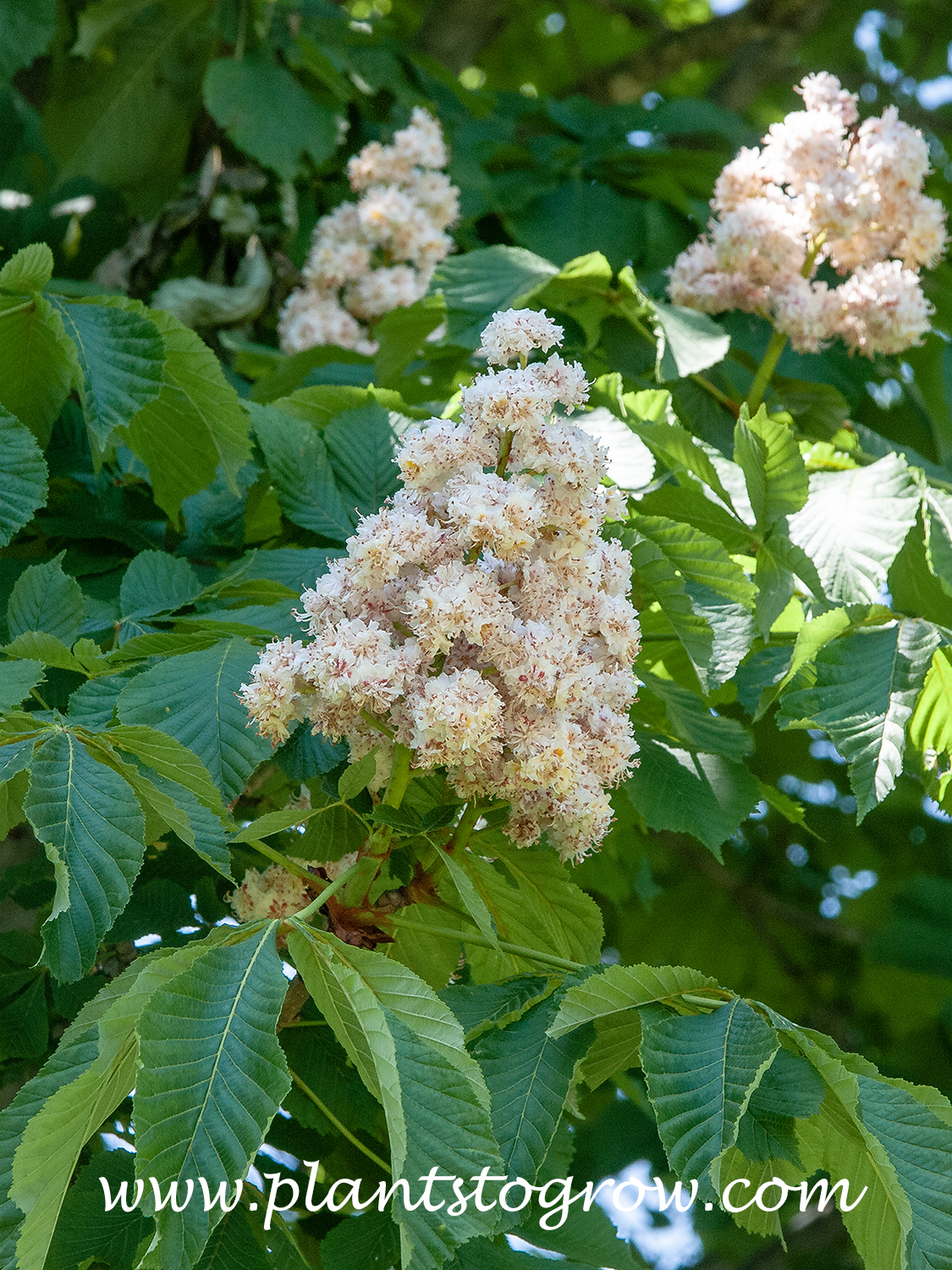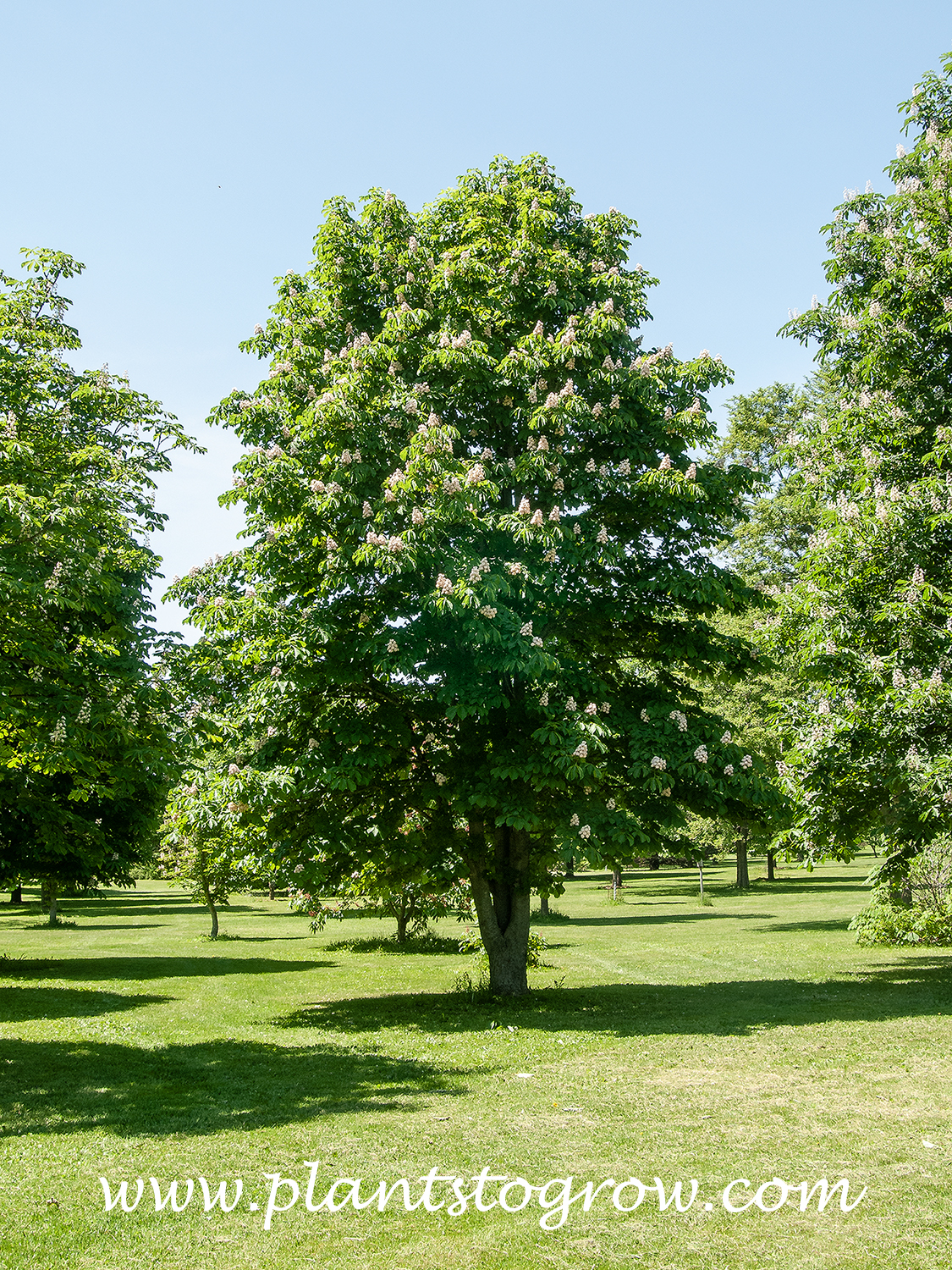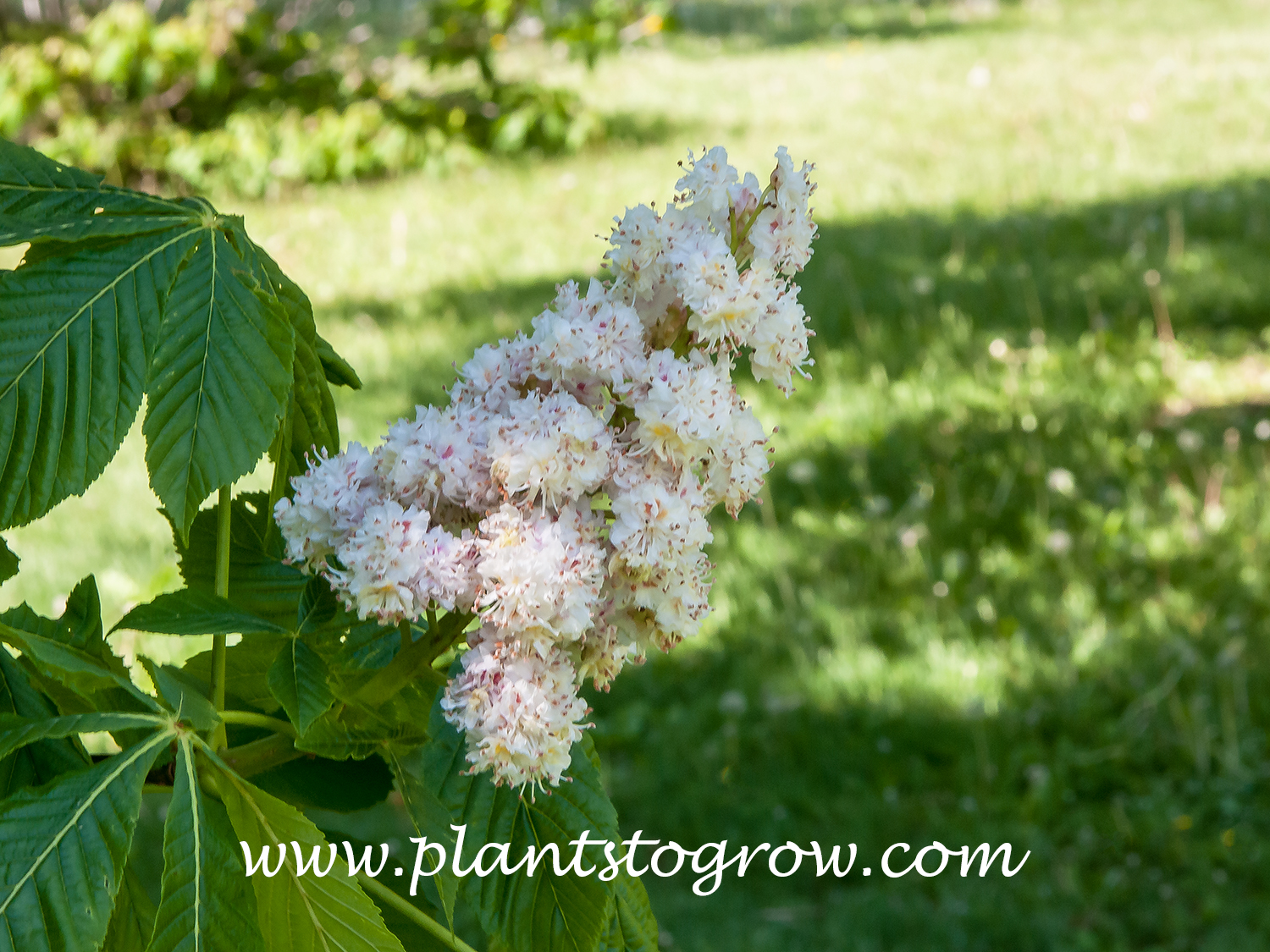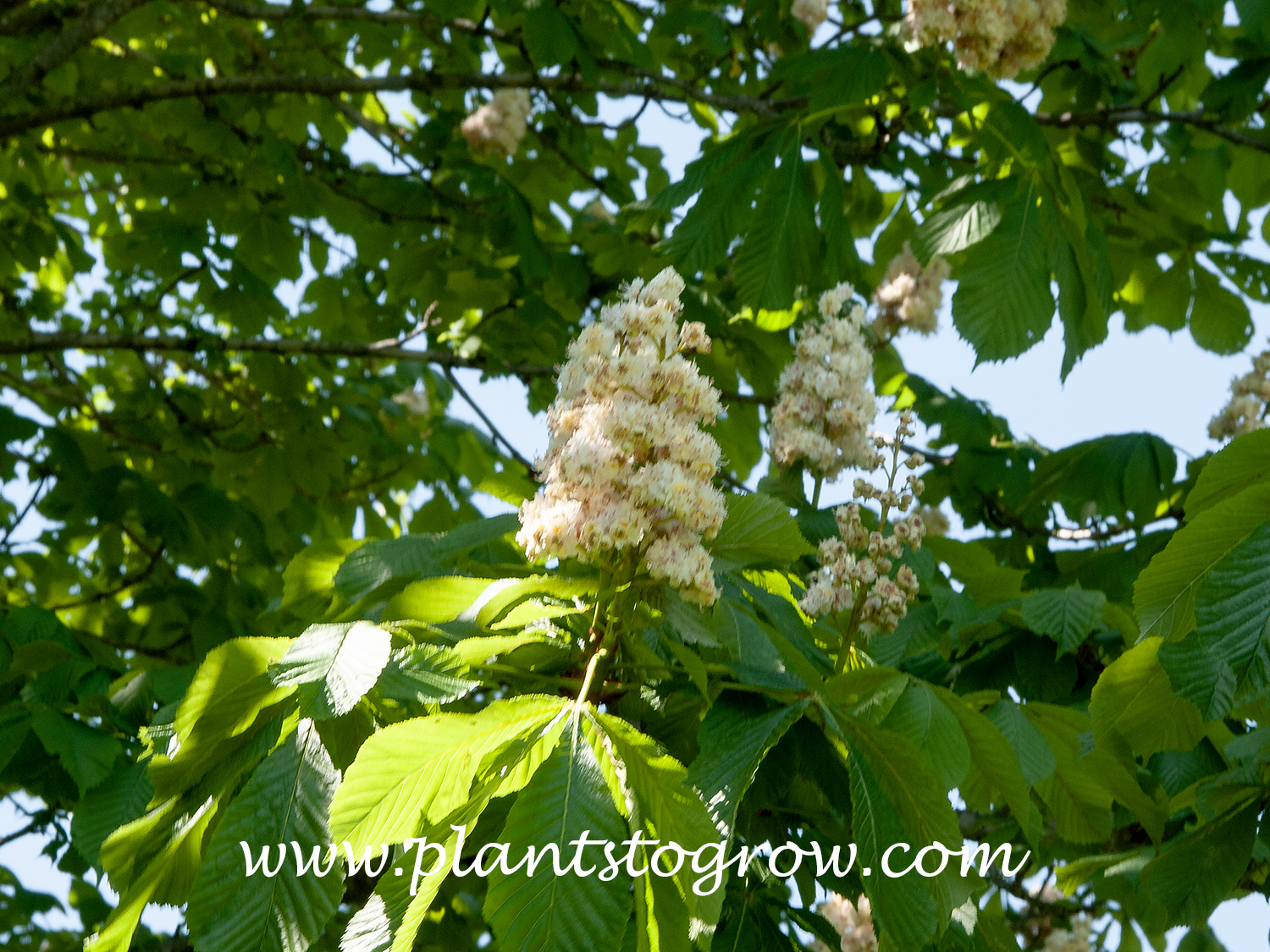| Description | Baumann Horse Chestnut (Aesculus hippocastanum) is a large deciduous tree with panicles of double white flowers. |
|---|---|
| Pronunciation | (es-KU-lus)(hip-oh-kas-TA-num) |
| Plant Type | Trees Deciduous |
| Hardiness Zone | (4)5 |
| Sunlight | sun to light shade |
| Moisture | average, avoid very dry |
| Soil & Site | average, avoid dry |
| Flowers | Large panicles of double white flowers show slight tints of red and yellow. |
| Fruit | The flowers are primarily sterile, so only a few fruits are produced. |
| Leaves | Green opposite, palmately compound with 5-7 leaflets. The fall colors are only fair at best. Like many Aescules, the leaves can be damaged by rust fungus. |
| Roots | From a taprooted that, once established, is very difficult to transplant. |
| Dimensions | 40–80 feet tall by 35–60 feet wide: elliptical when young and very large and rounded at maturity |
| Cultivar Origin | In 1819, Constantin A. N. Baumann discovered a sport on an otherwise normal garden tree in Geneva, Switzerland. This sport has been sold in North America since around 1850 (Jacobson, 1996). |
| Notes & Reference | #93-North American Landscape Trees (Arthur Lee Jacobson), #245-Trees for American Gardens (Donald Wyman) |

Cart
